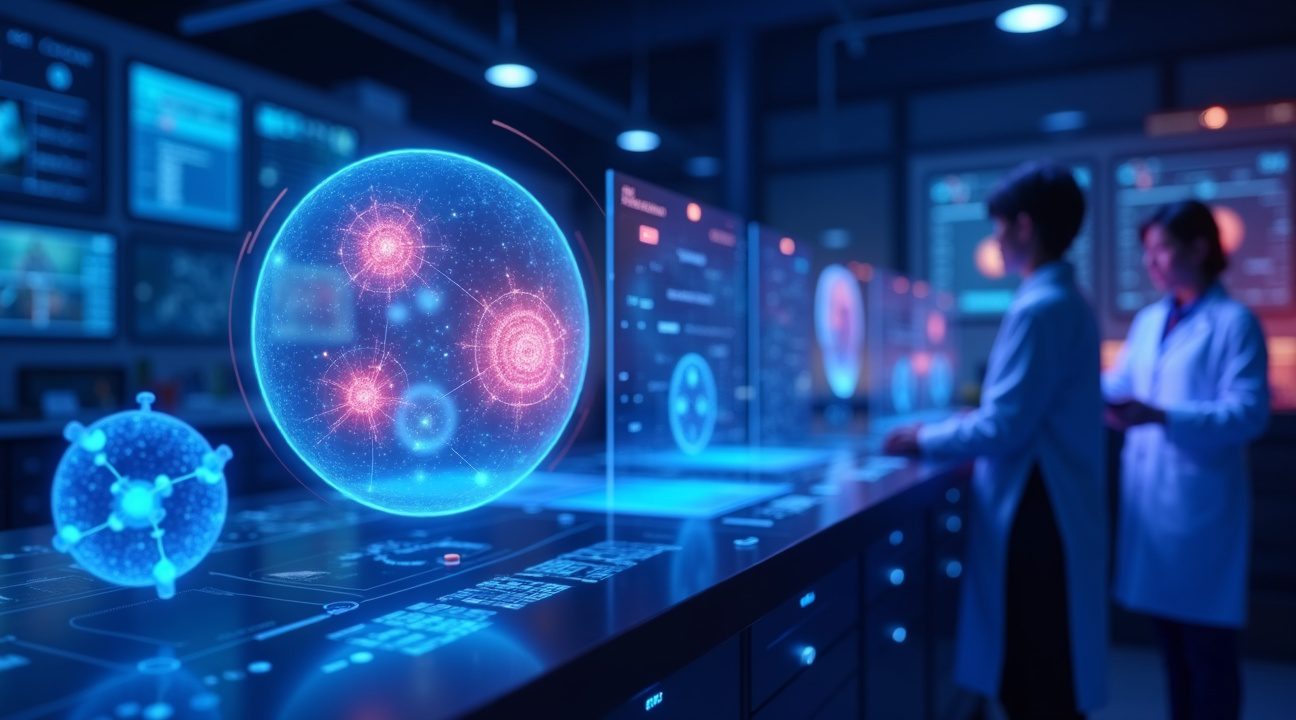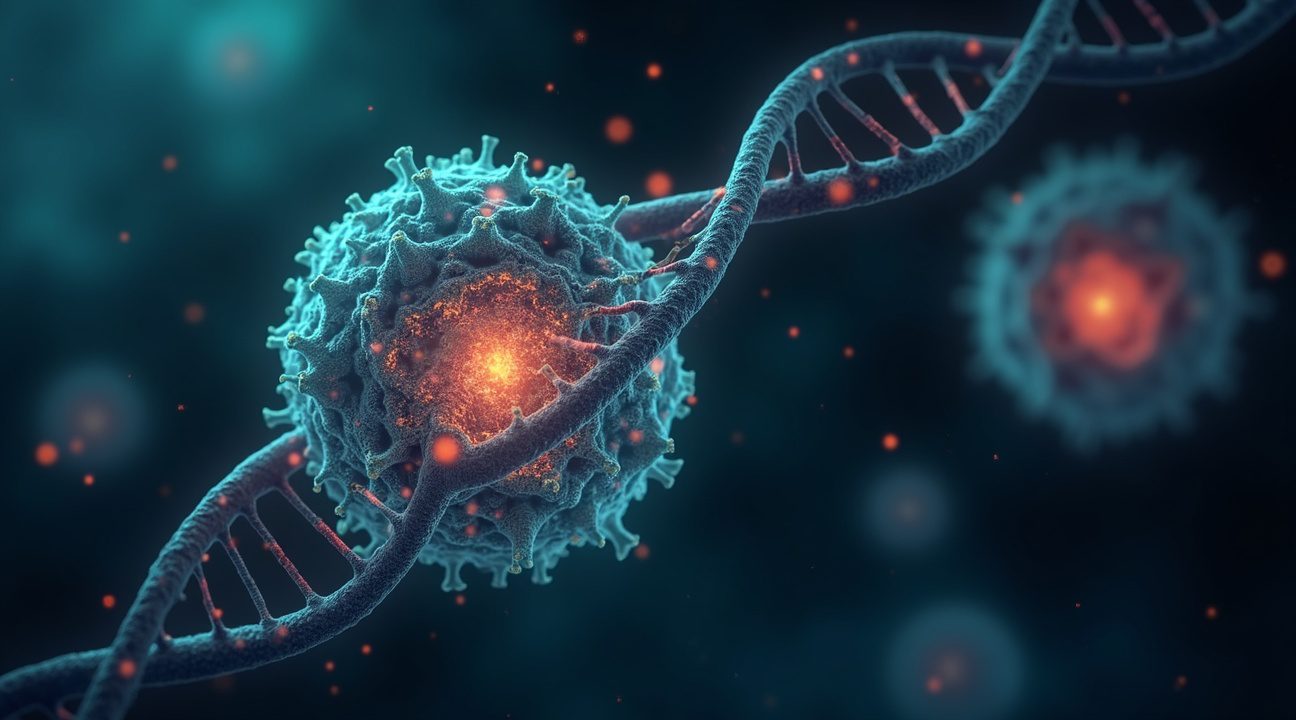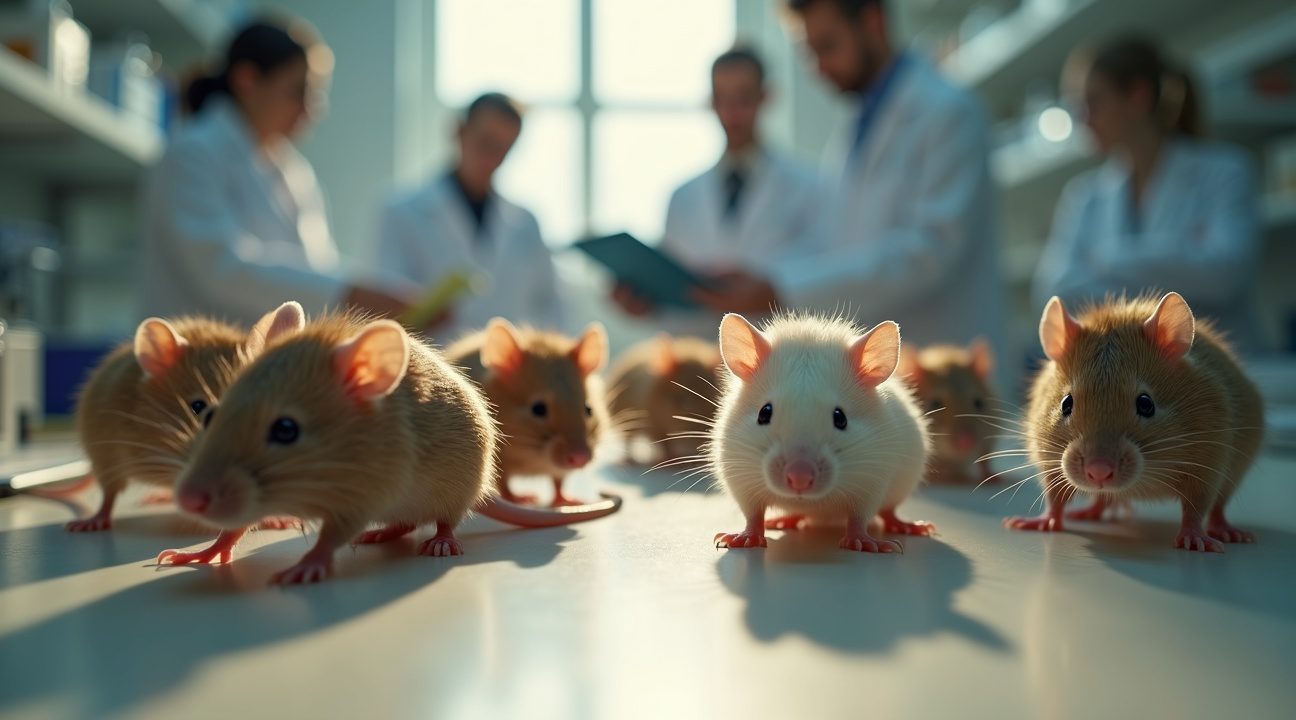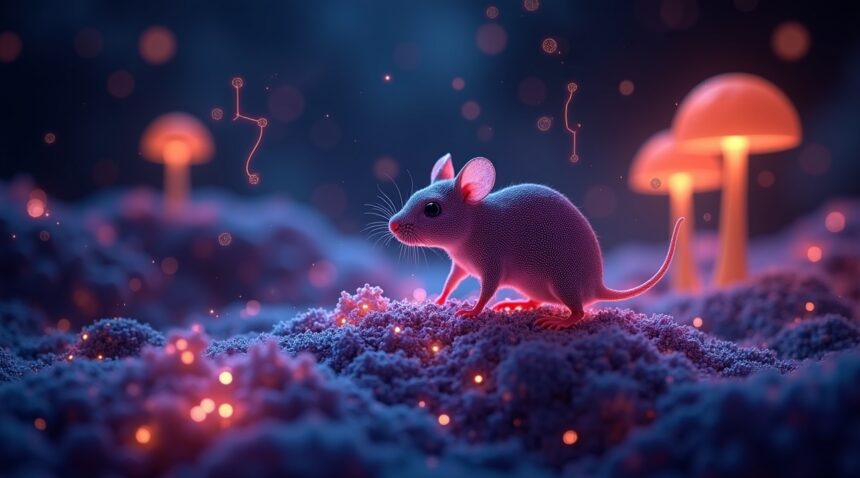A groundbreaking 2025 study has demonstrated that psilocin, the active metabolite of psilocybin, can extend human skin and lung cell lifespans by up to 57% through dose-dependent mechanisms.
The research reveals that psilocin targets multiple aging pathways simultaneously, including cellular senescence, telomere preservation, and oxidative stress reduction. These actions have not only impacted cultured human cells but also shown promising results in animal models, with aged mice experiencing a 30% increase in survival.
Key Takeaways
- Psilocin extends lifespans of human skin and lung cells by 29% to 57%, with effects varying by dosage—higher doses lead to more significant improvements.
- The compound influences three essential aging mechanisms: delaying cellular senescence, preserving telomere length, and reducing oxidative stress.
- Activation of the SIRT1 longevity gene is a crucial response to psilocin, while the reduction of cell cycle arrest proteins p21 and p16 further contributes to cellular regeneration.
- Animal trials in aged mice yielded a 30% increase in survival rate, along with physical rejuvenation such as better fur condition, partial hair regrowth, and improved mobility.
- Clinical application of psilocin faces hurdles including the need for safe dosing protocols, rigorous long-term safety assessments, and future regulatory approval to enter therapeutic use.
Challenges and Next Steps for Clinical Use
While the molecular benefits of psilocin are evident in vitro and in animal models, translation to human therapies will require extensive trials. Determining optimal dosages that balance efficacy with safety is critical. Regulatory frameworks around compounds like psilocybin must also evolve before its applications in age-related therapies can be approved.
For those interested in the broader implications and earlier research on the potential medical uses of psilocybin, additional information is available from sources like the National Institutes of Health and clinical trial databases.
Psilocin Extends Human Cell Lifespan by Over 50% in Groundbreaking Research
A revolutionary study in 2025 has revealed that psilocin, the active metabolite of psilocybin, can dramatically extend human cellular lifespan. Researchers observed that both skin and lung cells experienced significant longevity improvements when exposed to this naturally occurring compound.
Dose-Dependent Effects on Cell Survival
The research demonstrates a clear dose-dependent relationship between psilocin concentration and cellular lifespan extension. Lower concentrations produced a 29% increase in cell survival, while higher doses achieved remarkable extensions of up to 57%. This range indicates that psilocin’s anti-aging effects can be modulated based on dosage, offering potential for precise therapeutic applications.
I found these results particularly significant because they show that psilocin doesn’t simply provide modest benefits — it creates substantial improvements in cellular health. The consistency of results across both skin and lung cell types suggests that psilocin’s effects may translate to multiple organ systems throughout the human body.
Mechanisms Behind the Life Extension
Scientists identified three primary mechanisms through which psilocin extends cellular lifespan:
- Delays cellular senescence – the process by which cells stop dividing and begin to deteriorate.
- Preserves telomere length – protecting the protective caps on chromosomes that naturally shorten with age.
- Reduces oxidative stress – lowering harmful reactive compounds that contribute to aging and cellular damage.
Perhaps most importantly, psilocin significantly reduces oxidative stress levels within cells. Oxidative stress contributes to cellular damage and aging, so this reduction represents a fundamental protective mechanism. These findings align with recent discoveries about essential building blocks for life and how certain compounds can influence biological processes.
The implications extend beyond simple cell survival. By addressing multiple aging pathways simultaneously, psilocin demonstrates a comprehensive approach to cellular health that could influence how researchers approach age-related diseases. The compound’s ability to target senescence, telomere preservation, and oxidative stress reduction suggests it works through interconnected biological networks rather than isolated mechanisms.
This research represents a significant advancement in understanding how psychedelic compounds might influence aging processes. While psilocybin has gained attention for its mental health applications, these findings reveal that its metabolite psilocin may offer additional benefits for cellular health and longevity. The dose-dependent nature of the effects also provides researchers with valuable data for future therapeutic development and dosing protocols.

How Psilocin Targets Key Aging Mechanisms at the Cellular Level
I’ve discovered that psilocin operates through a sophisticated network of cellular pathways that directly combat aging at the molecular level. The compound demonstrates remarkable precision in targeting specific mechanisms that govern cellular longevity and health.
SIRT1 Activation and Longevity Gene Expression
Psilocin significantly increases the expression of SIRT1, a critical gene associated with longevity and stress resistance mechanisms. This activation represents a fundamental shift in how cells respond to aging stressors. SIRT1 functions as a master regulator of cellular health, controlling everything from DNA repair to metabolic efficiency. When psilocin enhances SIRT1 expression, it essentially activates the body’s natural anti-aging machinery at the genetic level.
The compound simultaneously reduces proteins related to cell cycle arrest, particularly p21 and p16. These proteins typically accumulate as cells age, forcing them into a state of senescence where they stop dividing and begin to deteriorate. By lowering these arrest signals, psilocin allows cells to maintain their regenerative capacity for extended periods.
Cellular Proliferation and DNA Protection
Psilocin promotes markers tied to healthy cell proliferation, including proliferating cell nuclear antigen (PCNA) and phosphorylated retinoblastoma protein. These biomarkers indicate that cells remain active and capable of division, which is essential for tissue repair and maintenance. This balance between controlling harmful cell cycle arrest while promoting healthy proliferation represents a sophisticated approach to cellular aging management.
The compound’s ability to lower oxidative stress proves equally impressive through its reduction of reactive oxygen species. These harmful molecules damage cellular components over time, contributing to accelerated aging and tissue degradation. Recent research has shown promising results in various fields, from space exploration to cellular biology. Psilocin’s antioxidant properties protect cells from this damage, preserving their structural integrity and functional capacity.
This biochemical preservation contributes directly to maintaining longer telomeres and slower cellular aging. Telomeres serve as protective caps on chromosomes, and their length correlates strongly with cellular lifespan. By reducing oxidative damage and supporting healthy cellular function, psilocin helps preserve these critical structures, effectively extending the functional lifespan of skin and lung cells.

Aged Mice Show 30% Survival Increase with Psilocybin Treatment
Animal studies provide compelling evidence that psilocybin’s anti-aging properties extend far beyond isolated cellular effects. Researchers observed a remarkable 30% increase in survival rates among aged mice treated with psilocybin compared to their untreated counterparts. This significant improvement demonstrates the compound’s potential to influence fundamental aging mechanisms at the organism level.
Physical Rejuvenation Beyond Cellular Benefits
The treated mice exhibited visible signs of rejuvenation that researchers could observe without specialized equipment. Key improvements included:
- Enhanced fur quality with increased shine and density
- Regrowth of hair in previously balding areas
- Improved overall physical appearance and vitality
- Better mobility and activity levels throughout the study period
These physical manifestations suggest that psilocybin’s effects cascade through multiple biological systems rather than targeting isolated cellular pathways. The improvements in external appearance likely reflect deeper physiological changes occurring throughout the body.
Scientists believe these whole-body improvements indicate that psilocybin influences systemic aging processes rather than simply affecting individual cell types. The compound appears to coordinate multiple anti-aging mechanisms simultaneously, creating a comprehensive rejuvenation effect that extends from cellular repair to organ-level function.
The mouse model results provide critical support for expanding therapeutic exploration of psychedelics in aging interventions. These findings complement the human cellular studies, suggesting that what researchers observe in laboratory cell cultures translates effectively to living organisms. The survival rate improvements offer particularly strong evidence for psilocybin’s potential as an anti-aging therapeutic.
Animal models serve as essential stepping stones between laboratory discoveries and human clinical applications. The 30% survival increase observed in these aged mice represents a substantial therapeutic effect that would be considered highly significant in any medical intervention. Such dramatic improvements in both lifespan and health span suggest that psilocybin could offer meaningful benefits for human aging.
The physical health indicators observed in treated mice provide researchers with measurable benchmarks for future studies. These visible improvements offer practical endpoints that scientists can easily monitor and quantify in subsequent research. The combination of extended survival and enhanced physical appearance creates a compelling case for advancing psilocybin research into human clinical trials focused on aging and longevity.
Similar to how SpaceX launch marks a new era in aerospace technology, these animal studies may herald a new era in anti-aging medicine, with psilocybin leading the charge in psychedelic-based longevity interventions.

Clinical Applications and Safety Considerations for Human Use
The groundbreaking 2025 research on psilocin’s ability to extend human skin and lung cell lifespans opens exciting therapeutic possibilities, yet significant hurdles remain before clinical implementation becomes reality. I recognize that moving from laboratory success to human treatment requires extensive validation through carefully designed clinical trials. The initial findings provide compelling evidence, but researchers must now tackle the complex challenge of translating cellular benefits into safe, effective therapies for aging-related conditions.
Therapeutic Potential and Treatment Development
Clinical applications could potentially address age-related skin deterioration and respiratory function decline. I understand that dermatological treatments might focus on wound healing acceleration and skin elasticity preservation. Similarly, pulmonary applications could target conditions like chronic obstructive pulmonary disease or age-related lung capacity reduction. However, developing these treatments demands rigorous protocols that ensure patient safety while maximizing therapeutic benefits. Research teams must establish clear treatment parameters and identify which patient populations would benefit most from psilocin-based interventions.
Critical Safety and Dosing Challenges
Determining optimal dosing protocols represents perhaps the greatest challenge facing researchers. I’ve observed that effective cellular-level concentrations don’t automatically translate to safe human dosages. Scientists must carefully balance therapeutic efficacy against potential adverse effects, particularly considering psilocin’s psychoactive properties. Safety considerations include:
- Cardiovascular effects during treatment administration
- Neurological impacts from repeated exposure
- Potential drug interactions with existing medications
- Long-term cellular changes that might occur with extended use
- Psychological effects that could affect treatment compliance
Extended use safety remains largely unexplored territory. I recognize that while short-term cellular benefits appear promising, researchers lack comprehensive data on long-term consequences. Future studies must examine whether continued psilocin exposure maintains beneficial effects or potentially creates unforeseen complications. Additionally, establishing patient screening criteria becomes essential to identify individuals who might experience adverse reactions.
Regulatory approval processes will demand extensive Phase I through Phase III trials, potentially requiring several years before any clinical applications reach patients. I anticipate that initial trials will focus on carefully controlled environments with intensive monitoring. The scientific community must also address ethical considerations surrounding psychoactive compounds in medical treatment, ensuring informed consent protocols adequately explain both potential benefits and risks.
Clinical implementation success ultimately depends on resolving these safety questions while developing standardized treatment protocols. I believe that addressing these challenges systematically will determine whether psilocin’s promising cellular effects can safely transition into revolutionary anti-aging therapies.
Sources:
Lifespan.io – “A Hallucinogenic Mushroom Compound Extends Mouse Lifespan”
BCM – “Can psychedelic mushrooms turn back the clock?”
FoodMedCenter – “Psilocybin: The Cellular Fountain of Youth — How ‘Magic Mushrooms’ May Hold the Key to Healthy Aging”
Emory University – “Psilocybin delays aging, extends lifespan, new Emory study suggests”
MedicalNewsToday – “Do ‘shrooms’ have anti-aging effects?”
ScienceAlert – “Psilocybin Extends Life of Human Cells by 50% in Wild New Study”
GeorgiaCTS – “New Study Finds Psilocybin May Delay Aging and Extend Lifespan”


